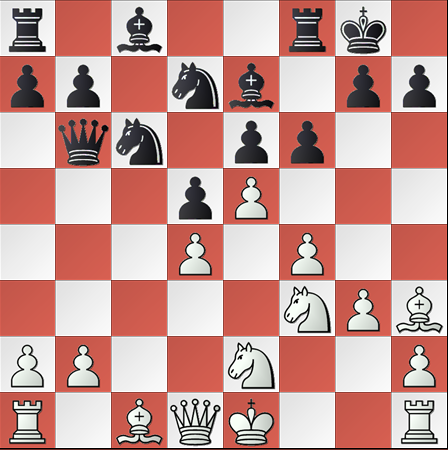In last two Bad Bishop articles (how to deal with bad bishop and bad French bishop and its consequences) we talked about how the bad bishop can lead to a disaster in this article we will look at other side of the Bad Bishop.
One of the trick situations one quite frequently encounters in a middle game is that of a bad French bishop arising in the opening stage of the game in which the light squared bishop of black is invariably blocked by its pawns at e6 and d5, shunning the possibility of prospective development for that light squared black bishop.
The typical French defense opening is the cause for such a development and it is this reason that many of the exponents of French defense that black’s light squared bishop be sacrificed in the early part of the game, thus paving way for a competitive middle game between the two players.
The bad French bishop is not always bad as it is perceived to be, and if right tactics are employed, black’s light squared bishop can be very handy and turn out to be the good bishop. In this game, played between two grandmasters in the early 1990s, one can find and appreciate how the bad French bishop has been converted into a good one leading to the victory of black over white.
Given below is the position of the game after 11 moves and it is the turn of white to make the move.

A cursory look at the position indicates that black’s light squared bishop is rooted to its original square at c8 blocked by pawn at b7 and Knight at d7. But, black can make the bad bishop active if it is prepared to sacrifice a couple of pawns if required. Black did precisely the same after the opportunity presented itself.
| 12. | Bxe4 | Kh8 | |
| 13. | Bxd5 | fxe5 | The opportunity presented itself with a chance to open up the two black bishops |
| 14. | fxe5 | … |
The position after the 14th move of white is presented below for an assessment:

Black effectively seizes the opportunity and surprises White with a couple of sacrifices in an attempt to gain control over the board.
| 14. | … | Ncxe5 |
| 15. | dxe5 | Nxe5 |
| 16. | Nf4 | Bb4+ |
| 17. | Kf1 | … |
The position after White’s 17th move is given below:

Black has successively cleared the way for the “bad” French bishop to finally come out and assist in the attack. The smart play by Black ensured that the “bad” bishop gets transformed ultimately into a “good” one, and spearheaded the attack on White king, as follows:
| 17. | … | Rxf4 | |
| 18. | gxf4 | Bh3+ | French bishop comes out with a bang |
| 19. | Ke2 | Ng4 | |
| 20. | Nd4 | Qc5 | |
| 21. | Be6 | Rd8 | |
| 22. | Be3 | Nxe3 | |
| 23. | Kxe3 | Bxe6 | |
| 24. | Rc1 | … |
The position after white’s 24th move is given below:

Black has virtually taken control over the game with the assistance of the two bishops, especially the otherwise “bad” French bishop.
| 24. | … | Rxd4 |
| 25. | Qxd4 | Bd2+ |
| 26. | 0 – 1 |
It is curtains for White. The “bad” French bishop need not always be bad. Effective tactics is bound to make this bad bishop a very good one. This game also vindicates the fact that the famous French defense is in fact a very competitive opening worth exploring.


One Comment
Who says he is bad? To me he is the best